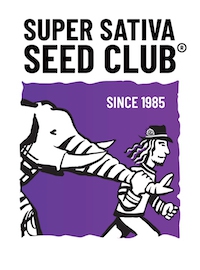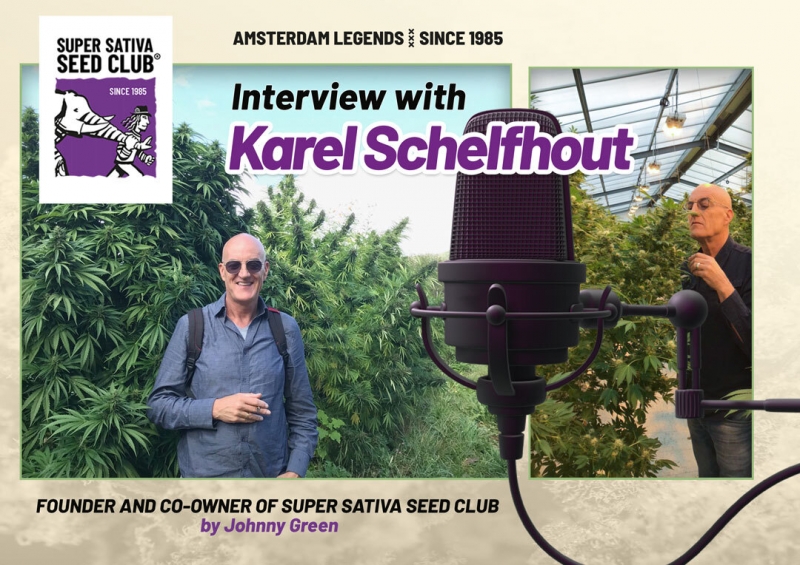
INTERVIEW WITH KAREL SCHELFHOUT, FOUNDER AND CO-OWNER OF SUPER SATIVA SEED CLUB ( by Johnny Green)
(999) (0)
In the 1980’s the world was a completely different place to the fast world we now live in. The 80’s was a great era with a lot of cool innovations such as the introduction of the mobile phone, the CD-player, microwave, ATM machine, PC, Mac and the launch of the world wide web in 1989. The radio played Madonna, Tina Tuner, David Bowie, Wham... and the movies were dominated by Sylvester Stallone as Rocky or Rambo.
There were also no cannabis seed companies until Karel stared The Super Sativa Seed Club. This is his story…..
Hey Karel, where do you come from and what’s your background?
I was born in Zeeland, a place on the coast in the far south of the Netherlands. But at the age of 18 I needed to get out of there and this is how I ended up in Den Haag. In those days the the squatters’ movement was big - I was charmed by it and the kind of people who were involved.
Is this also where your love for cannabis began?
Well, let me explain. In those days I went to college to study, receiving a monthly allowance from the government but I also worked in a coffeeshop and that’s where it all started. One of the customers called Pete told me that he visited the States and that they grew weed with artificial lights, this was completely unknown over here. I decided to buy a grow light which was used in normal horticulture - something The Netherlands are famous for. A book store in Den Haag sold the High Times magazine with lots of useful grow info and we bought every copy of it. Together with my flat mate Pim we started growing weed in the squat building we lived in. Finally we could do something useful with our free electricity! Of course we were not paying for it, not a problem in those days.. . We were in our early twenties and probably the first ones in The Netherlands trying to grow weed indoors with artificial lights.
How did you guys know how to do so because there was hardly any information available?
That’s right, there was nothing yet, no grow shops, no genetics, nothing. We got the genetics from the weed that we bought in the coffeeshops, the seeds were inside the weed. This was weed from Congo, Jamaica, Thailand (Thai stick), South Africa (Durban)...
The pollinated imported weed was compressed and smuggled in bricks, not really available anymore because nobody wants it. With our first grow we covered the entire grow room in aluminium foil because we thought this would reflect really well...lol. We also soon found out that we needed better ventilation because the humidity was crazy and water was dripping down the walls.
At the time Ed Rosenthal released his first grow book and we learned from his mistakes an
d advice. For example, with Ed’s first grow he filled the entire floor with 50 cm of soil so we where wise enough to grow in pots from the start.
Close to Den Haag is the Westland, Holland’s greenhouse horticulture region, where flowers, fruits and vegetables are grown on a large scale. We decided to visit and we noticed that they all grew in rock wool, in long rows of hundreds of meters, investing $millions. So we thought, if the pro’s grow on rock wool, so should we, not realising how difficult this was. We soon found out that we needed to add nutrients because the plants performed poorly, time to learn fast! However, there were no grow/nutrient schedules available so we went to the library to read about growing tomato's and other crops. Based on the available info about how to grow peppers we quickly learned how to make our own nutrients. The pepper plant also grows with lots of leaves and flowers - very similar to cannabis. The pepper grow guide clearly described the correct mix of Calcium Nitrate, Magnesium Sulfate, Potassium Nitrate etc - we simply followed this schedule which went well.
Then the idea already came to mind to start a nutrients company but we believed that this wouldn’t work because we thought that any fool could do this, 10 years before Canna nutrients was born....
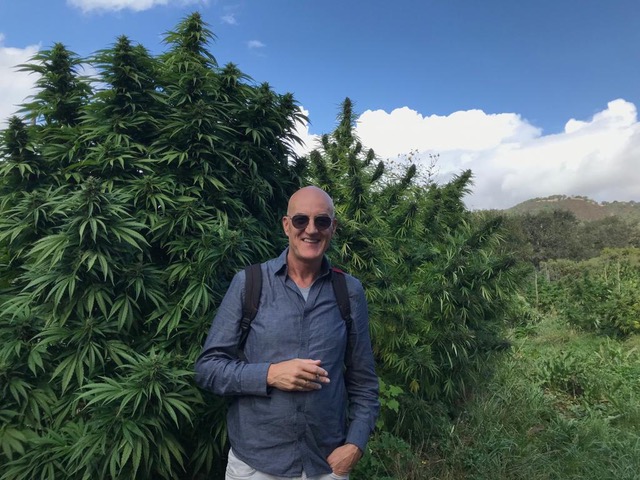
How successful was your first grow?
It didn’t go well but the second time it was very successful. However, the quality of the plants wasn’t great because of the unstable genetics we used, obtained from the seeds we found inside the weed we bought in the coffeeshops. This was the moment when we asked Fat Pete to go visit the High Times in NYC to find better genetics. To his disappointment the High Times was very rejective and wanted nothing to do with Pete, out of fear for the authorities. But Pete did not give up that easily and kept visiting every day, nowadays called harassment. His persistence did pay off in the end and a friend of High Times gave him a bag of seeds to take home. These seeds were the William's Wonder seeds. No further info was given about the heritage.
By that time Pim and I made so much money that we were able to buy our first house (the whole building) in Den Hague for 35 thousand guilders at the time, about sixteen thousand euro’s in todays currency. In this building we started to grow the William’s Wonder but we soon realised that we needed an aircon and CO2 device. Using a water cooled aircon showed that we were ahead of our time in regard to professional growing. This resulted in a killer harvest with the best weed available at the time. This William’s Wonder weed was sold to the coffeeshop for 5 thousand guilders per kilo, an amazing amount in the eighties.
So how did you continue from there, because you used all the William Wonder seeds?
From a commercial point of view we already realised that we needed to create mother plants to produce clones.This way we were able to provide the coffeeshop with the same consistency and high quality every time. Each run we produced around 5 kg of weed with great satisfaction from the coffeeshop and her customers.
Of course we kept reading the High Times magazine and we noticed an advertisement from a seed bank in a small village in The Netherlands. The advertisement said, “send us one dollar and in return you will receive our seed catalogue”. So we sent them one dollar and one week later we received his catalogue. This turned out to be The Seed Bank from Neville who was well ahead of what we were doing. He travelled the world and visited places like Thailand, Afghanistan, Nepal to obtain the local seeds (landraces) and brought them home. We were the first Dutch growers to contact Neville and he invited us to come over with great enthusiasm. During this visit he showed us a box with 500 packets inside which were all seeds. We discussed a possible co-op but this didn’t work out well so went our own way again.
.jpg)
How did you move forward from that point?
It started with a problem because our grow operation went up in flames. We are still not sure what happened but an electrical issue caused the fire. The local news paper reported about this fire and were astounded that the fire department found all these burned up cannabis plant, never seen before in living room. Strangely enough we got away with it without any consequences... After this adventure we decided to start our own seed company and this is how Super Sativa Seed Club started. However, in the beginning it didn’t work well and business was slow. We had to build trust and ensure US growers that they would receive the ordered seeds after sending cash payments.
Not much later Steve Hager from High Times visited us in The Hague for an interview and from the moment it was published our business exploded. We were placed on the cover of High Times magazine and got a lot of exposure as the high-tech growers from the Netherlands, growing with rock wool, using pH and EC meters and the SOG (Sea of Green) method, which we invented.
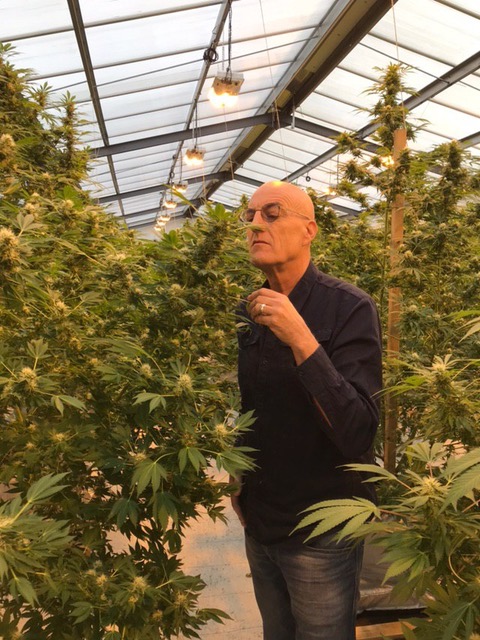
Can you tell a bit more about the development of the Super Sativa genetics?
In the same period we received a letter from Sam the Skunk Man, an American living in the Netherlands at the time who was responsible for the creation of Skunk#1. We met him at Dam square in Amsterdam. Sam was one of the first breeders of Cannabis in the USA. Sam travelled the world to obtain his breeders stock. He made the first stable strain in the world: Skunk#1. This variety had only two different pheno’s, one with X-mas tree shaped buds and one with round buds. The same smell and taste - only a different bud structure. He developed Skunk#1 in the States. Sam's favourite weed was Haze, the result of former crosses of the obtained land races. He had around 20 of his favourite Haze seeds left in stock and we got half the seeds to try ourselves. The other 10 seeds he gave to Neville. These Haze seeds produced plants with a long flowering time of 13 weeks and a lot of very small buds. We were not impressed, especially because we were in love with Skunk#1. Skunk #1 gave us, for the first time in our life, big monster buds. To our surprise the high from this Haze was incredibly strong with a crazy uplifting effect. The smoke was so thick, greasy and heavy that ( in our memory) we said that it went down instead of up.
How long was the flower period of this Haze?
About 13 weeks…. so all the stories you hear about old school Haze flowering for 17 weeks are false and became a sort of myth. The current old school Haze offered by SSSC is made with the Skunk#1 and this Haze. We made a selection from the Skunk #1 x Haze cross and then selected the best plants for seed production. The clones for this cross are still alive today, 40 years later!
How the hell did you mange to keep clones alive for so long?
A bit of love and passion, dedication and discipline but it’s also important to keep your clones at different locations in case you lose them, as a back up. Of course we lost a lot of mother plants during these 40 years because of the Police or unfortunate setbacks. The current old school Haze that we offer contains all kinds of genetic back grounds. We look forward to the day that we can produce legally which makes breeding so much easier. It’s hard to develop, improve and produce seeds in an illegal situation because of the high risk involved. The legalisation in the US is a good example of how fast things can change for the better, the quality of American weed is now the best in the world.
How many strains did you developed at the time?
We only produced regular seeds and it was actually really simple, our seeds bank consisted of 15 female mother plants and 10 males. So we used these to make a lot of different crosses and often we did not even have the time to test them because of the high demand, all coming from the States. The business model was great and simple, send us cash in an envelope to our Postal Box and we shipped the seeds. We shipped the seeds from Belgium because shipping from the Netherlands raised suspicion.
Amongst all the letters with orders that we received we frequently also got people applying for a job because they found SSSC super cool and this how we ended up with 4 American representatives taking care of the US distribution. We used a FAX to send them the order forms and they replied with what they needed. Of course we paid them in cash and the ones doing really well were rewarded with a trip too.
Amsterdam was the drugs Walhalla at the time. Soon the USA reps asked us not to pay with 100 dollar notes anymore because people around them started to wonder where all the money came from. A lot of the customers were Vietnam war veterans and benefitted from the weed, a lot suffered from PTSD syndrome. Plus a lot of them started using weed recreationally in Vietnam. These guys were not scared of anything and we made a lot of money with them selling them our seeds.
 2.jpg)
For how long did it last and why did it end?
It lasted for about 4 years in total. We started to make so much money and the orders did not only come from the States anymore but we received letters from all the world, so the risk increased. Things got too big and we now received orders for thousands of euros in different currencies. I clearly remember receiving 6 notes of 1000 Canadian dollars and when we brought them to the exchange office the desk employee had to open his book of foreign currency to check if it existed and if it was real, again different times. Same thing happening with Japanese Yens and so on... The PO Box could hardly fit all the envelops anymore and we started to loose payments which were stolen by workers from the Postal office. It was great to make so much money but that was not why we did it because we still remained activists and also had our political reasons. Our intro words in the catalogue were ”We want to keep America high”. However, our fear for the US authorities (FBI or CIA) got serious and we were scared of extradition.
Did you ever regret stopping SSSC?
No we didn’t and Sam amongst others told us that this was the best decision we ever made, to quit while you're ahead. Not long after we shut it down “Operation Green merchant” started and the famous war on drugs was launched by Ronald Reagan and his wife. The grow climate in The Netherlands remained pretty mild as long as you didn’t grow a Greenhouse full. In the early years in total we received 3 invitations from the Police to visit their office for a chat and we went once without any further consequences, again different times.
Neville never stopped his “Seed Bank of Holland" business and did end up in jail in Australia because of a request from the American authorities.
How do see today’s climate compared to those days?
Complete nonsense of course because we still talking about nothing more than a plant, which is completely harmless compared to alcohol and tobacco. The bad stigma on our beloved plant that exists in the Netherlands is insane and caused by Dutch politicians. In the Netherlands we are currently busy with “a legal grow experiment”, Licensed Producers growing legal weed for the coffeeshops and I feel lucky that we are part of this project. Some people say that I really deserve this and it completes my circle, going back to my growing roots.
What happened after you closed SSSC? I know that you were the sunglass King with a lot of stores at the Dutch beach but what else?
I always kept growing on a small scale for personal use and because it’s my passion. I always say, “weed is not addictive but growing it is”. I’ve been growing the same Haze for decades now. It's not appreciated by everyone because of the intense smell, by some referred to as cat piss. It really can smell a bit too much but the effect of this old school haze is extremely uplifting and almost psychedelic, not what most young people who just want to get stoned are looking for. Most stoners seek the relaxing side of cannabis, the downer and not so much an energetic high. The Americans taught me to smoke pure weed without tobacco which is still the standard in the Netherlands.
What do you like to smoke beside your own old School Haze?
I like Amnesia and Kush strains or the gassy ones, but also Gorilla Glue, Cookies, OG.... The effect is not always to my liking but these types of weed are very tasty. It’s funny how it all started in the States and how the circle keeps going round and round. From the moment that we can legally grow in the Netherlands we will be at the same level again as in the States and maybe even better. When you have plenty of time for new strain R&D on a large scale with tens of thousands of plants to choose/breed from, it will result in top quality weed!
So this means great opportunities for SSSC?
Yes, for sure and you see a lot of USA influences in the current collection of seeds. We use a lot of genetics from the States and it’s great seeing what happening over there! We really hope to move forwards soon with our Dutch grow experiment. I believe it’s gonna take some time before the public opinion will change in a positive way after 50 years of oppression from the government.
You also started Biotabs nutrients, how did this happen?
The desire to grow organically kept increasing over the years and it became harder to grow in rock wool, we often had problems with rotting roots. This was the mean reason to start growing organically about 15 years ago and has been the standard for me since then. More recently I wrote my first organic grow book, published by Mama Editions.
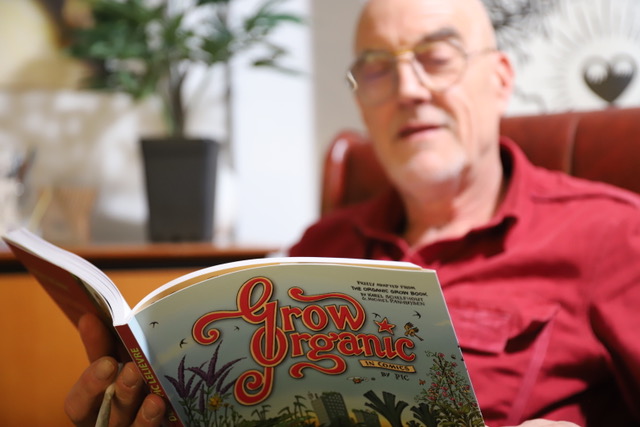
You also have two sons, are the involved in the business?
My son Kees is co-owner of Biotabs and my other son is not involved in the cannabis industry.
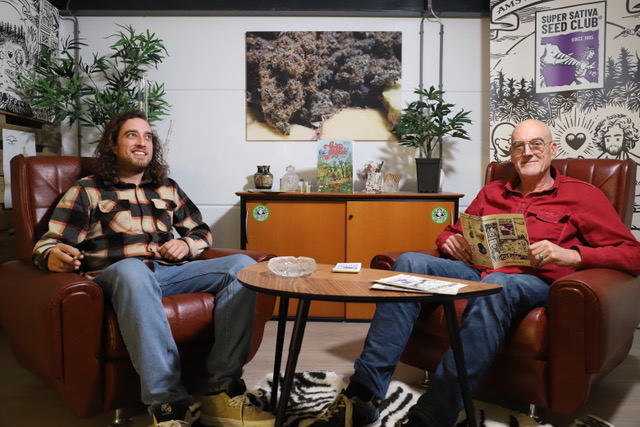
How do you see the future, do you still have dreams?
My dream is to grow my plants in large numbers in an organic way.
I would love to see opportunities for everyone who like to grow weed,
How do you see this?
Governments are always talking about legalisation but it’s actually regulation, which is restricted to certain people or groups. In a legal situation is everybody allowed to do as he or she pleases. That’s how I think it should be!
If you can give growers one piece of advice what would it be?
Keep it simple, grow with Biotabs and SSSC genetics ;) Keep your plants healthy, with enough light and optimised conditions. Having the climate right is 70% of the job. And pay more attention to the drying and curing process which is often neglected by growers. More weed is destroyed after harvest than before harvest.
One last comment from me if I may. My special thanks to the High Times magazine and all the pioneers for their contribution to the cannabis industry!
(999) (0)
